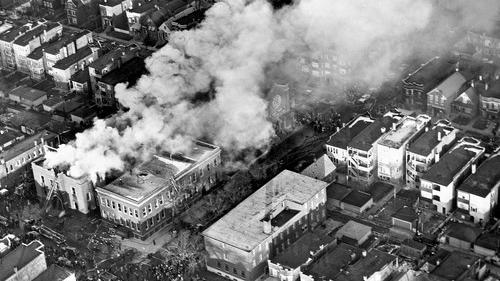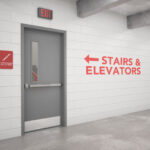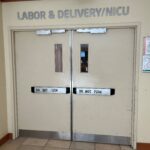During the 2018 model code development cycle, proponents of classroom barricade devices proposed that the requirements of the International Building Code (IBC), International Fire Code (IFC), and NFPA 101 – The Life Safety Code should be relaxed. One of the reasons given was the fact that there has not been a school fire with a large loss of life in decades.
While this is true – today’s schools are built with safety features that would have undoubtedly saved lives in past fires – credit goes to the prescriptive codes and strong enforcement. School fires DO still occur – according to NFPA there are an average of approximately 5,000 structure fires in educational occupancies each year. The code requirements that ensure free egress and fire protection help to mitigate the effects of those fires, which is why the model code requirements were NOT relaxed in the last code cycle – they were actually strengthened.
Saturday, December 1st, 2018 was the 60th anniversary of the fire at Our Lady of the Angels School in Chicago, where 92 students and 3 nuns were killed. I hope you will take a few minutes to learn more about what occurred that day, and how today’s buildings better protect students and staff from fire. Security is an important consideration for today’s schools, but it is not necessary to give up any of the gains made in school safety, in order to provide adequate security. There is extensive information about this on the School Security page of iDigHardware.
~~~
~~~
60 Years Later: Our Lady of the Angels School Fire – Firehouse Magazine
The fire had started in the basement and quickly spread up a stairwell. Fire doors on the first floor stopped the smoke and flames, and students on that floor fled the building. Things were much different on the second floor where there were no fire doors and the smoke and flames spread down a hallway, trapping students in five classrooms. The students’ only way out was through the windows. Ironically, a fire department inspector at the school a couple of months before the fire had noted the lack of fire doors upstairs, but because of the building codes and grandfather clauses, he could not demand their installation.
~~~
Angels Too Soon: The Tragic Our Lady of the Angels School Fire – WTTW
Hal Bruno, who would later become a prominent political journalist with ABC News, was one of the first reporters on the scene, because he arrived as a volunteer fireman with Rescue Squad 2. “We went in, and went down to the basement, and it was like a textbook version of how a fire spreads. There were these barrels of trash next to the stairs, and there were burn marks coming up in a perfect V, going up the stairs. At the first-floor level, there was a common door that prevented the fire from going into the first floor. And up at the top, at the second floor, there was the killer – an open stairwell. So regardless of what caused the fire, if there had been a door at the top of those stairs, nobody would have died. All they would have had was a trash fire in a stairway.”
~~~
How Regulation came to be: Our Lady of the Angels – Daily Kos
Everything we needed to know to prevent the loss of life at Our Lady of the Angels we knew before December 1st, 1958.
- We knew that stored combustibles were a fire hazard that should be kept to a minimum.
- We knew that stairwells needed to be enclosed and fire doors installed.
- We knew that stairs needed to be made of non-combustible material.
- We knew floors, walls, and ceilings needed to be constructed of material that, if not outright fire-resistant, at least spread flames at the slowest possible rate.
- We knew that transoms created dangerous passageways for the spread of fire and ought to be eliminated.
- We knew that sprinklers could effectively suppress or extinguish a fire and prevent the loss of lives and property.
- We knew that concealed spaces created hidden passageways for fire to spread.
- We knew that heat detectors, tied to direct activation of fire alarms and a direct signal to the fire department allowed detection of fire before anyone had become aware of it.
- We knew that fire alarms, promptly activated, allowed people critical time to escape danger.
- We knew that early reporting of a fire permitted firefighters to get to the scene before the fire could get out of control.
- And so much more.
Not only did we know all these things, most of these things were mandated by the fire codes in effect at the time. If Our Lady of the Angels had been built after 1949, if would have contained most of these life-saving features.
~~~
If you’d like to learn more about this fire, the OLA Fire Memorial website includes a wealth of information and links to other resources. Let’s use the lessons learned to balance school safety and security, rather than taking two steps backward.
You need to login or register to bookmark/favorite this content.






This is an excellent read and an eye opener
1000% agree, Keith!
Great article to show customers who request us to do installations or modifications not permitted by code why we just don’t do it. If I had a dollar for each time I hear “I know the inspector” or “do it without a permit so the inspector doesn’t give us a hard time”. My favorite is “the other guy who quoted the job told me it would not be an issue”
Thank you for sharing.